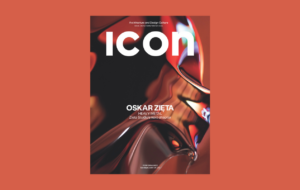|
The designer and co-founder of the Dutch practice spoke to Icon during Belgrade Design Week last month about nature, technology and the studio’s latest project at the Rijksmuseum in Amsterdam “We wanted them to feel alive and move as fluidly as possible, as it would be with a living flower,” says Ralph Nauta about Shylight, his practice Studio Drift‘s permanent installation that opens in the new wing of Amsterdam’s Rijksmuseum this month. It comprises five spring-loaded silk shapes that drop in a choreographed fashion from cocoons in the ceiling.
Studio Drift’s Shylights at Luminale 2012 in Frankfurt The piece is inspired by flowers that close their petals at night and is a good example of Studio Drift’s approach. The Dutch firm’s interactive lighting installations and sculptures combine the separate interests of its two founders: Nauta and Lonneke Gordijn, who met while studying at Design Academy Eindhoven. “I’m interested in science fiction and Lonneke is interested in nature,” Nauta says. “She used to think science fiction was all about aliens and lasers, but I showed her that it’s also about new social structures and technology. Now, we often don’t even know who came up with the ideas we are working on.” Fragile Future, a sculpture of three-dimensional bronze electrical circuits connected to light-emitting bulbs of handpicked dandelion seeds, is another project that demonstrates their interest. But the duo is hungry for larger projects. “Ultimately, we want to make massive, public sculptures. In the Rijksmuseum, there are five Shylights, but we’d like to have 50 somewhere, which you can walk underneath and they make different patterns.”
Fragile Future Their recent project wins are already taking them in this direction. Last month they secured a contract to create Particle Plan, a permanent installation on the landmark truss Chapel Bridge in Lucerne, Switzerland. The lighting patterns will constantly change as people walk across it. They are also creating an 18m-high moving installation in central London at an as-yet undisclosed location.
Nauta sees Studio Drift’s work as part of a wider ambition to make technology more publicly accessible. “Large corporations have massive investments in old technology, so will do anything to keep new technology from us. As designers, we can show the world that there are other solutions – new ways of creating energy and working with depleting resources and new social structures.” And the practice’s next project aims to do just that. “We came across an engineer who has devised a process for recycling chemical waste based on the mechanisms of a volcano. He extracts all the reusable raw materials out of chemical waste to create a synthetic volcanic glass – obsidian.” Studio Drift have used this material to make sculptures – for example, a mirror that Nauta says is about “reflecting on your own chemical waste” – and are researching how the material can be used more widely. “We are also using our network of contacts to raise money to open a factory to create the material.” |
Words Debika Ray |
|
|


















